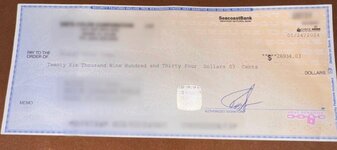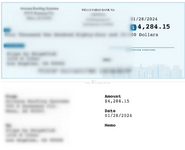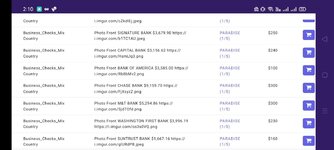Understanding Checks and Cashout Processes
Checks, both physical and digital, are financial instruments used to transfer money from one party to another. While legitimate uses of checks are common, there are also fraudulent schemes involving checks, which can lead to legal consequences. Below is an explanation of how checks work, the differences between physical and digital checks, and the cashout process.
1. Is Selling Checks a Real Thing?
Yes, checks are sold and traded in both legitimate and illegitimate contexts. For example:
- Legitimate Context: Businesses may sell pre-printed checks for payroll or other financial transactions.
- Illegitimate Context: Fraudsters may sell stolen or counterfeit checks, which is illegal and can lead to severe penalties.
If someone is offering to sell checks, it is crucial to verify the legality of the transaction. Engaging in fraudulent activities involving checks can result in criminal charges.
2. Physical vs. Digital Checks
- Physical Checks:
- These are traditional paper checks that include the payer's bank account details, routing number, and signature.
- They are physically deposited or cashed at a bank, ATM, or check-cashing service.
- Digital Checks:
- These are electronic versions of checks, often used for online transactions.
- They contain the same information as physical checks but are processed digitally, often through mobile banking apps or online platforms like PayPal.
Key Difference: Physical checks require manual handling, while digital checks can be processed electronically, making them faster and more convenient.
3. Cashout Process
The process of cashing or depositing a check involves the following steps:
- Endorsing the Check:
- The recipient signs the back of the check to authorize its deposit or cashing.
- Depositing or Cashing:
- At a Bank: Present the check at your bank or credit union. You may need to provide identification.
- At an ATM: Many ATMs allow you to deposit checks by scanning them.
- Online/Mobile Deposit: Use a banking app or services like PayPal to deposit the check digitally.
- Check-Cashing Services: Retailers like Walmart or specialized check-cashing outlets can cash checks for a fee.
- Verification:
- Banks or services verify the check's authenticity before releasing funds. Fraudulent checks are flagged during this process.
4. Information Required for Cashing Checks
To cash or deposit a check, the following information is typically required:
- Valid Identification: A government-issued ID (e.g., passport, driver's license).
- Bank Account Details: If depositing the check into a bank account.
- Endorsement: Your signature on the back of the check.
For digital checks, you may also need:
- A smartphone or computer with a camera for scanning.
- Access to a mobile banking app or online platform.
5. Setup Required
To cash checks, you need:
- A Bank Account: This is the most straightforward way to deposit or cash checks.
- Mobile Banking App: For digital deposits.
- Access to Check-Cashing Services: If you don’t have a bank account, services like Walmart or PayPal can help.
6. Is It Easy for Beginners?
For legitimate purposes, cashing checks is relatively straightforward, especially with modern tools like mobile banking apps. However, engaging in fraudulent activities involving checks is
not easy and carries significant risks, including:
- Legal consequences (e.g., fines, imprisonment).
- Financial losses if the check is flagged as fraudulent.
Important Note
If you are new to checks, focus on
legitimate uses and avoid any involvement in fraudulent schemes. Fraudulent activities, such as cashing stolen or counterfeit checks, are illegal and can lead to severe penalties. Always verify the authenticity of checks and use trusted financial institutions for transactions.
 ,As i am beginner and has no knowledge about this.Ifsomeone had knowledge plz share.
,As i am beginner and has no knowledge about this.Ifsomeone had knowledge plz share. .
. ,whats the cashout process.
,whats the cashout process. and Digital
and Digital  Checks-check attachments↓
Checks-check attachments↓ .
. .
. .
.




